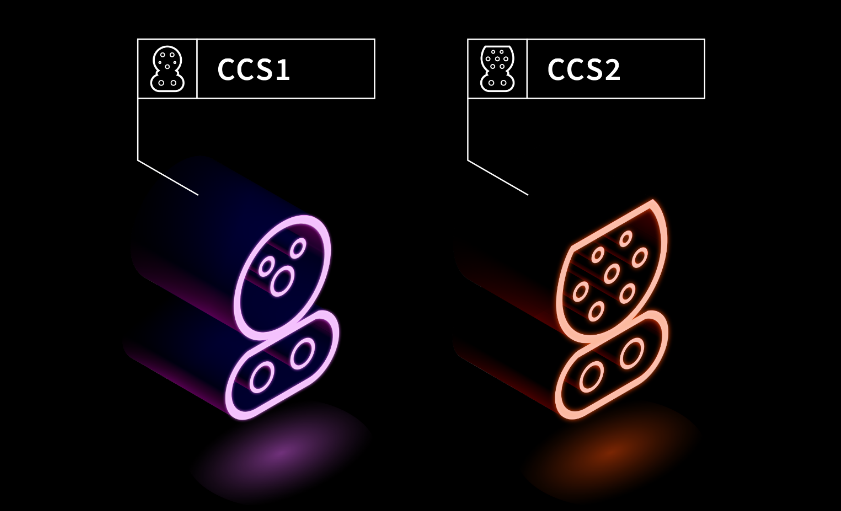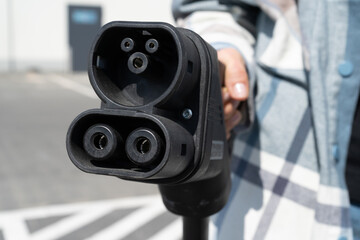Menu
Menu

The booming Indian EV market hinges on a robust charging infrastructure. Currently, the ratio of EVs to charging stations is 135:1, highlighting the urgent need for more options. This article explores the different types of EV charging guns available in India, along with their functionalities and benefits.
Electric car | AC Connector | DC Connector |
Audi e-tron SUV and Sportback | Type 2 | CCS |
BMW iX | Type 2 | CCS |
BYD E6 | Type 2 | CCS |
Hyundai Kona Electric | Type 2 | CCS |
Jaguar I-Pace | Type 2 | CCS |
Lexus NZ | Type 2 | CHAdeMO |
Mahindra e2o | IEC60309 | GB/T |
Mahindra eVerito | Type 2 | GB/T |
Mercedes-Benz EQC | Type 2 | CCS |
MG ZS EV | Type 2 | CCS |
MINI Cooper SE | Type 2 | CCS |
Nissan LEAF | Type 2 | CHAdeMO |
Porsche Taycan | Type 2 | CCS |
Tata Nexon EV | Type 2 | CCS |
Tata Tigor EV (Old) | IEC60309 | GB/T |
Tata Tigor EV (New) | Type 2 | GB/T |
Tata Tigor EV Ziptron | Type 2 | CCS |

India’s commitment to reducing emissions and fostering sustainable future fuels the rapid growth of its electric vehicle sector. However, a well-developed charging infrastructure is crucial to sustain this momentum. With insufficient charging stations, potential EV owners might face range anxiety, hindering wider adoption.
AC vs. DC Chargers: Understanding the Speed Difference
There are two main categories of EV chargers in India: AC (Alternating Current) and DC (Direct Current). AC chargers, typically used for home charging, offer a slower charging rate (6-8 hours for a full charge). They are convenient and inexpensive to install, making them ideal for overnight charging.
On the other hand, DC fast chargers are employed at public charging stations and offer significantly speedier charging times (under an hour for a full charge). They deliver DC power directly to the battery, bypassing the car’s onboard converter and resulting in a quicker charging process.

EV Charger | Output Type | Power Output | Input Voltage | No. of Guns | Socket Type |
LEV AC | AC | 3.3 KW | 230 V, | 1 | IS-60309 |
Bharat AC001 | AC | 3*3.3 KW | 415V | 3 | IS-60309 |
Type 2 AC | AC | 7.4 and 22KW | 7.4 KW – 230V, | 1 | IS-17017-2-2 |
Bharat DC 001 | DC | 10KW/15KW | 415V | 1 or 2 | GB/ T 20234.3 |
CCS | DC | 25-150KW | 415V | 1 | IS-17017-2-3, Configuration FF |
CHAdeMO | DC | 25-150KW | 415V | 1 | IS-17017-2-3, |

While AC and DC chargers categorise the overall charging system, different charging guns exist within these categories, each compatible with specific vehicle types. Here’s a breakdown of the most common ones:

The Indian EV market’s success hinges on a multi-pronged approach. Increasing the number of charging stations with various charging gun options is crucial. Additionally, promoting public awareness about the benefits and ease of EV charging will encourage wider adoption. Initiatives focused on developing cost-effective and efficient charging solutions will further propel the EV revolution in India.
While the number of EV charging guns in India might seem limited compared to the burgeoning EV market, the industry is evolving. Potential EV owners can make informed decisions by understanding the types of charging guns available and their functionalities. With continued government support and industry innovation, India is poised to create a robust EV charging infrastructure that fosters a sustainable future.
© 2024 Massive Mobility Private Limited. All rights Reserved